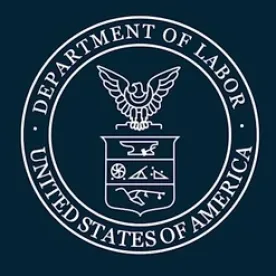The Department of Labor (DOL) has promulgated temporary regulations to implement provisions of the Emergency Paid Sick Leave Act (EPSLA) and the Emergency Family and Medical Leave Expansion Act (EFMLEA) which were enacted as part of the Families First Coronavirus Response Act, Public Law 116-127 (FFCRA), in response to the COVID-19 pandemic.
The Rule is effective from April 1, 2020, through December 31, 2020.
This update summarizes the key provisions of the Temporary Rule.
EPSLA Leave Entitlements (29 CFR § 826.20)
Employees can receive EPSLA leave for one of the following six reasons:
-
They are subject to federal, state, or local quarantine or isolation orders related to COVID-19, but only if “but for” their being subject to an order, they would be able to perform work that is otherwise allowed or permitted by their employers. Leave is not available when employers do not have work for employees seeking leave as a result of an order or other circumstances.
-
They have been advised by healthcare provider to self-quarantine due to concerns related to COVID-19.
-
They are experiencing symptoms of COVID-19 and seeking medical diagnosis from healthcare provider, but only for the time they are unable to work because they are taking affirmative steps to obtain a diagnosis.
-
They are caring for an “individual” who is either subject to a government issued quarantine or isolation order or is directed to self-quarantine by healthcare provider, but only if “but for” a need to care for an individual, they would be able to perform work for their employer, either at their normal workplace or by teleworking.
-
They are caring for a “son or daughter” whose school or place of care has been closed, or the son or daughter’s child care provider is unavailable, for reasons related to COVID-19, but only if no other suitable person is available to care for the child during the period of leave.
-
Employees are also eligible if they have “a substantially similar condition” as specified by the Secretary of Health and Human Services, in consultation with the Secretary of the Treasury and the Secretary of Labor.
As is the case with traditional FMLA, the taking of leave under the EPSLA or EFMLEA does not impact an employee’s exempt status under FLSA sections 6 and/or 7.
Calculating EPSLA Leave Hours (29 CFR § 826.21)
Employees are deemed full-time and entitled to 80 hours of EPSLA leave if they are normally scheduled to work at least 40 hours each workweek.
Employees who do not have a normal weekly schedule also may be considered full-time if the average number of hours per workweek the employee is scheduled to work, including hours for which the employee took leave of any type, is at least 40 hours per workweek over a period of time that is the lesser of: (i) the six-month period ending on the date on which the EPSL; or (ii) the entire period of the employee’s employment.
Calculating EPSLA Leave Pay (29 CFR §826.22)
Employers should pay employees who take leave for EPSLA reasons #1-3 the higher of the employee’s average “regular rate” of pay or the federal, state or local minimum wage to which the employee is entitled. Employees taking leave for EPSLA reasons #1-3 may receive a maximum of $511 per day and $5,110 in the aggregate. Employers should pay employees who take leave for EPSLA reasons #4-6 two-thirds of their average “regular rate” of pay. Employees taking leave for EPSLA reasons #4-6 may receive a maximum of $200 per day and $2,000 in the aggregate.
Calculating EFMLEA Leave Entitlement (29 CFR § 826.23)
The EFMLEA provides eligible employees a 12-week benefit that is only available from April 1, 2020, through December 31, 2020. Any EFMLEA leave employees take counts toward their usual 12 workweeks of FMLA leave for any other qualifying reason in the 12-month period employers generally use to determine FMLA entitlement.
Employees may elect to use, or employers may require employees to use, accrued leave that under the employer’s policies would be available to employees to care for a child, such as vacation or personal leave or paid time off, concurrently with EFMLEA leave.
Calculating EFMLEA Leave Pay (29 CFR § 826.24)
The initial two weeks of EFMLEA leave is unpaid. Employees may substitute available EPSLA leave or accrued paid personal time for this unpaid EFMLEA leave. For each day an employee uses EFMLEA leave after the initial two week period, employers must pay eligible employees two-thirds of their average “regular rate” of pay for each hour an employee is scheduled to work that day, subject to the maximum of $200 per day and $10,000 in the aggregate for the additional 10 week period.
The Rule explains how to calculate an employee’s “scheduled number of hours.”
Employers calculate EFMLEA leave in the same manner for full- and part-time workers. Employers pay employees based on their scheduled number of hours.
Calculating the “Average Regular Rate” under the FFCRA (29 CFR § 826.25)
Employers must use an “average regular rate” to compute pay for EPSLA and EFMLEA leave. Employers do this in two steps. First, using the methods contained in 29 CFR Parts 531 and 778, employers must calculate the regular rate for each full workweek in which an employee has been employed over the lesser of: (i) the six-month period ending on the date on which the employee takes Paid Sick Leave or Expanded Family and Medical Leave; or (ii) the entire period of employment. Then, employers must “average” the weekly regular rates by weighting them by the number of hours worked for each workweek. In other words, the Rule requires employers to add up all of the earnings that are not excluded from the regular rate as required by the FLSA and divide those wages by all of the hours worked by the employee to obtain the weighted average of the regular rate over the applicable time period in (i) or (ii).
Employee Eligibility (29 CFR § 826.30)
The EPSLA and EFMLEA have different eligibility requirements.
All employees employed by a covered employer are eligible to take EPSLA leave. Only those employed for at least 30 calendar days are eligible to take EFMLEA leave, subject to certain exceptions.
Both the EPSLA and EFMLEA allow employers to exclude employees who are healthcare providers or emergency responders from taking EPSLA and EFMLEA leave.
Employer Coverage (29 CFR §826.40)
All private employers that employ fewer than 500 employees at the time an employee would take leave must comply with the EPSLA and the EFMLEA.
Employers must count the following toward the 500-employee threshold:
-
Full-time employees;
-
Part-time employees;
-
Employees on leave;
-
Temporary employees who are jointly employed under the FLSA by the employer and another employer;
-
All employees of integrated employers; and
-
Day laborers supplied by a temporary placement agency.
Individuals who are independent contractors under the FLSA do not count towards the 500-employee threshold.
The DOL excludes employees who have been laid off or furloughed and have not subsequently been reemployed but notably, there is no definition of the term “furlough.”
Only employees who are employed within the United States count toward the 500-employee threshold.
Private employers with fewer than 50 employees may be exempt from having to provide employees with EPSLA leave for EPSLA leave reason #5 and EFMLEA leave if they satisfy certain conditions specified in the Rule.
All covered public agencies must comply with both the EPSLA and the EFMLEA regardless of the number of employees they employ, although such employers may exclude employees who are health care providers or emergency responders as defined in the Rule.
Intermittent Leave & Reporting to Worksites (29 CFR §826.50)
EPSLA and EFMLEA can only be taken intermittently if both the employer and employee agree.
Given that leave for EPSLA reasons #1, 2, 3, 4, or 6 is intended to prevent COVID-19 spread, employees may not report to work at their employers’ worksites when taking such leave. Additionally, such leave generally would be taken continuously until employees exhaust or no longer need the leave.
Coordinating EPSLA and EFMLEA (29 CFR §826.60)
EPSLA benefits can run concurrently with those provided under the EFMLEA when taken for school or childcare closure/unavailability. The first two weeks of leave (up to 80 hours) may be paid under the EPSLA; the subsequent weeks are paid under the EFMLEA.
Employees may use other accrued employer-provided leave during unpaid periods of EFMLEA leave.
Coordinating EFMLEA and FMLA (29 CFR §826.70)
An eligible employee may only take a total of 12 weeks of EFMLEA leave between April 1, 2020 and December 31, 2020, even if that period spans two FMLA 12-month leave periods. An employee’s use of EFMLEA leave will reduce the employee’s 12-week regular FMLA entitlement.
Because the paid period of EFMLEA leave is not unpaid, the FMLA provision for substitution of accrued paid leave is inapplicable, and neither eligible employees nor employers may require substitution of accrued paid leave. However, employers and eligible employees may agree, where federal or state law permits, to have paid leave supplement EFMLEA pay to enable employees to receive full pay or wages.
Employer Notice Obligations (29 CFR §826.80)
All covered employers must post the DOL’s model notice in a conspicuous place but they can also satisfy the requirement by emailing or direct mailing the notice or posting on an internal or external employee information website.
Employers who are covered under EFMLEA but no other FMLA provisions satisfy notice requirements by posting this notice. Even if a small employer chooses to exempt any employees as permitted, the employer is still required to post a notice.
According to the Preamble, an employer is not required to provide the FMLA “specific notice obligations” for EFMLEA.
Employee Notice & Documentation Obligations (29 CFR §§826.90 and 826.100)
Employees seeking leave under the EPSLA and EFMLEA generally have notice and documentation obligations similar to, but a bit more relaxed than, that required for traditional FMLA.
When providing oral notice of their need for leave, employees generally must provide enough information to inform employers that they need leave for FFCRA qualifying reasons. For all leaves, employers can require oral notice and documentation of the requested leave date(s), qualifying leave reasons, and an oral or written statement that the employee is unable to work because of the qualifying leave reason. Employers may not require the notice to include information that exceeds the information employers can seek in supporting documentation.
The DOL also confirms that for leave taken under the regular FMLA for an employee’s own serious health condition related to COVID-19, or to care for the employee’s spouse, son, daughter, or parent with a serious health condition related to COVID-19, the normal FMLA certification requirements still apply.
If an employee fails to give proper notice, employers should give them notice of the failure and an opportunity to provide the required documentation prior to denying the request for leave.
Health Care Coverage (§ 826.110)
Employer obligations to continue health care coverage during EPSLA and EFMLEA leave generally mirror those under the FMLA. Employees who take EPSLA or EFMLEA leave are entitled to continue coverage under their employer’s group health plan on the same terms as if they did not take leave. During that leave, employers must maintain the same group health plan benefits provided to employees and their family members covered under the plan before taking leave. This requirement also applies to benefits provided through a supplement to a group health plan.
Multiemployer Plans (§ 826.120)
Employees covered by collective bargaining agreements are entitled to the benefits provided by the FFCRA. An employer must satisfy its obligation to provide FFRCA benefits afforded to represented employees consistent with its obligations under the terms of any applicable collective bargaining agreement.
If an employer is a signatory to a multiemployer collective bargaining agreement, the employer may satisfy both its paid sick leave and paid FMLA leave obligations by making contributions to the multiemployer fund, plan, or other program based on the number of hours of pay to which each employee is entitled, consistent with the terms of the multiemployer collective bargaining agreement. If required contributions are made to such fund, plan, or program, the employer’s obligations are satisfied upon transmittal of the payment and the fund, plan, or program then is required to make the appropriate payments to employees.
Return to Work & Job Restoration Rights (29 CFR § 826.130)
With certain limitations that also exist under FMLA, employees are entitled to be restored to the same or an equivalent position upon return from EPSLA or EFMLEA leave. The FFCRA does not protect employees from employment actions, such as layoffs, that would have affected employees had leave not been taken.
The EFMLEA says the FMLA’s restoration provisions do not apply to employers who have fewer than 25 employees if all four of the following conditions are met:
-
The employee took leave to care for his or her son or daughter whose school or place of care was closed or whose childcare provider was unavailable;
-
The employee’s position no longer exists due to economic or operating conditions that:
-
Affect employment, and
-
Are caused by a public health emergency (i.e., due to COVID-19 related reasons) during the period of the employee’s leave.
-
-
The employer made reasonable efforts to restore the employee to the same or an equivalent position; and
-
If the employer’s reasonable efforts to restore the employee fail, the employer makes reasonable efforts for a period of time to contact the employee if an equivalent position becomes available. The period of time is one-year beginning either on the date the leave related to COVID-19 reasons concludes or the date 12 weeks after the employee’s leave began, whichever is earlier.
Recordkeeping (29 CFR § 826.140)
Employers are required to retain all documentation (written or oral) provided relating to the need for FFCRA leaves for four years, regardless of whether leaves were granted or denied.
Employers that deny EPSLA or EFMLEA leave requests due to the limited small business exemption must document the determination by its authorized officer that it is eligible for the exemption and retain that documentation.
Prohibited Acts & Enforcement under EPSLA (29 CFR § 826.150)
Employers are prohibited from discharging, disciplining, or discriminating against employees because they took EPSLA leave, initiated a proceeding under or related to EPSLA leave, or testified or is about to testify in such a proceeding.
Prohibited Acts & Enforcement under EFMLEA (29 CFR § 826.151)
For EFMLEA leave purposes, employers are subject to the FMLA’s prohibitions against interference with the exercise of rights, discrimination, and interference with proceedings or inquiries.
Complaint Filing & DOL Investigation Procedures (29 CFR §§ 826.152 – 826.153)
A complaint alleging any violation of the EPSLA and/or the EFMLEA may be filed in person, by mail, or by telephone, with the DOL Wage and Hour Division.
Effect on Other Laws, Employer Practices and Collective Bargaining Agreements (29 CFR §826.160)
Employees may use EPSLA leave in addition to any other leave benefit they may be entitled to receive under (1) any other federal, state, or local law; (2) a collective bargaining agreement; or (3) an employer policy that existed prior to April 1, 2020.
Employers are prohibited from requiring employees to exhaust other paid leaves or take unpaid time before being able to use EPSLA leave.
Unused EPSLA hours or unused expanded FMLA leave time is not subject to cash out upon separation from employment or after the expiration of the FFCRA on December 31, 2020.
The maximum amount of EPSLA available to an employee is 80 hours. This is a per person maximum, not a per employer maximum.









 />i
/>i

